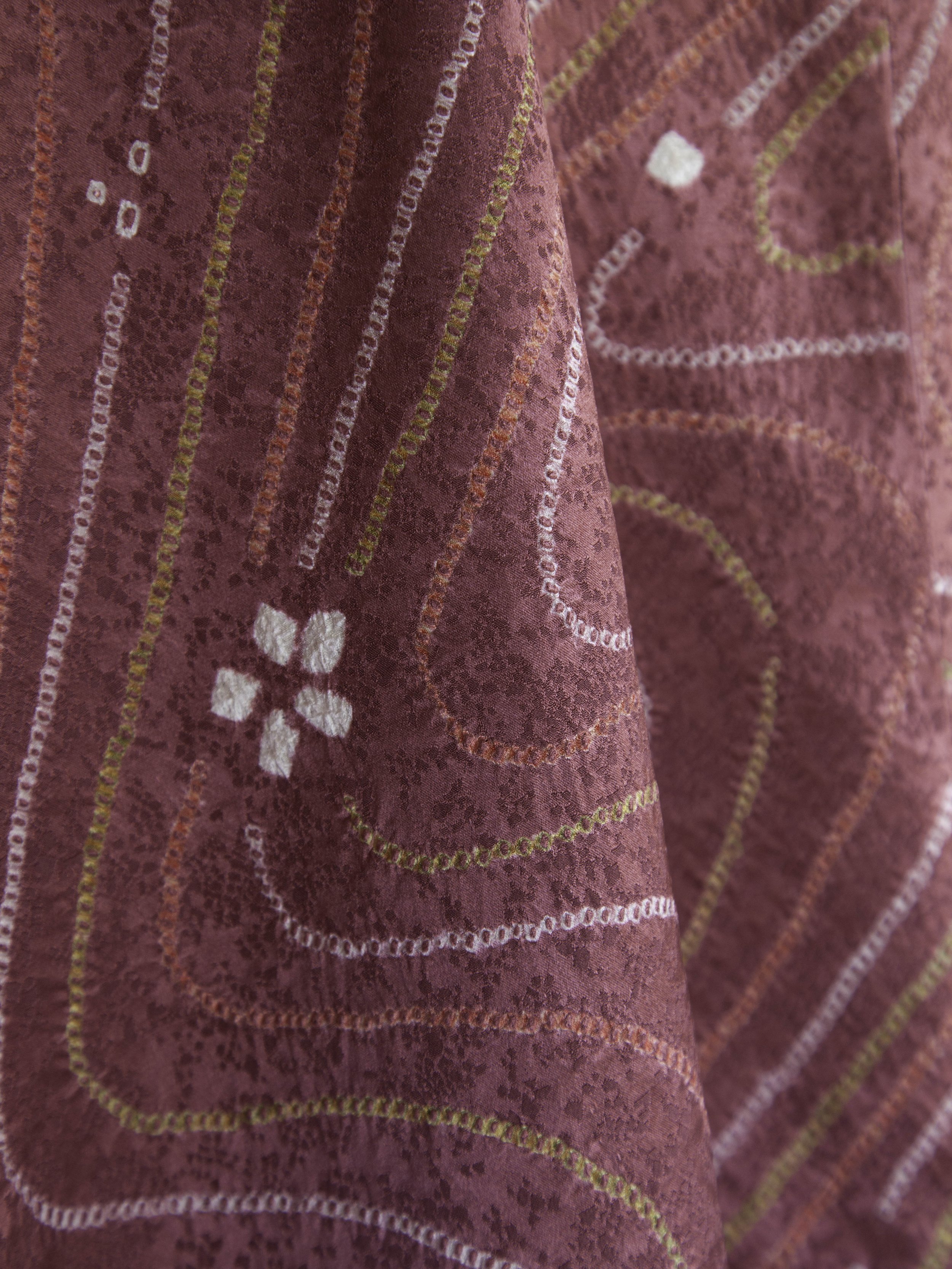Mauve Ryu-Sui Shibori Kimono Top
This top is made from a vintage Shibori Komono. Shibori 絞りis a traditional Japanese manual resist dyeing technique, which produces distinctive patterns on textiles. The earliest known example of cloth dyed with a Shibori technique dates from the 8th century. The Kimono features Ryu-Sui 流水 which means “flowing water” and is a common motif in Kimono design.
Traditionally, Kimonos are constructed from narrow bolts of silk that are cut into eight rectangular pieces, then folded and overlapped to fit the body. At any time, the pieces can be taken apart and sewn back together to accommodate size changes. This method of construction does not produce any waste. As a nod to this zero-waste philosophy, this top is made using the full width of Kimono silk and features a rounded neckline.
Flat garment measurements
Width: 70cm / 27.5 in
Length: 50cm / 20 in
Fits up to US 16
100% silk
dry clean only
Iron inside out on medium setting
This top is made from a vintage Shibori Komono. Shibori 絞りis a traditional Japanese manual resist dyeing technique, which produces distinctive patterns on textiles. The earliest known example of cloth dyed with a Shibori technique dates from the 8th century. The Kimono features Ryu-Sui 流水 which means “flowing water” and is a common motif in Kimono design.
Traditionally, Kimonos are constructed from narrow bolts of silk that are cut into eight rectangular pieces, then folded and overlapped to fit the body. At any time, the pieces can be taken apart and sewn back together to accommodate size changes. This method of construction does not produce any waste. As a nod to this zero-waste philosophy, this top is made using the full width of Kimono silk and features a rounded neckline.
Flat garment measurements
Width: 70cm / 27.5 in
Length: 50cm / 20 in
Fits up to US 16
100% silk
dry clean only
Iron inside out on medium setting
This top is made from a vintage Shibori Komono. Shibori 絞りis a traditional Japanese manual resist dyeing technique, which produces distinctive patterns on textiles. The earliest known example of cloth dyed with a Shibori technique dates from the 8th century. The Kimono features Ryu-Sui 流水 which means “flowing water” and is a common motif in Kimono design.
Traditionally, Kimonos are constructed from narrow bolts of silk that are cut into eight rectangular pieces, then folded and overlapped to fit the body. At any time, the pieces can be taken apart and sewn back together to accommodate size changes. This method of construction does not produce any waste. As a nod to this zero-waste philosophy, this top is made using the full width of Kimono silk and features a rounded neckline.
Flat garment measurements
Width: 70cm / 27.5 in
Length: 50cm / 20 in
Fits up to US 16
100% silk
dry clean only
Iron inside out on medium setting





